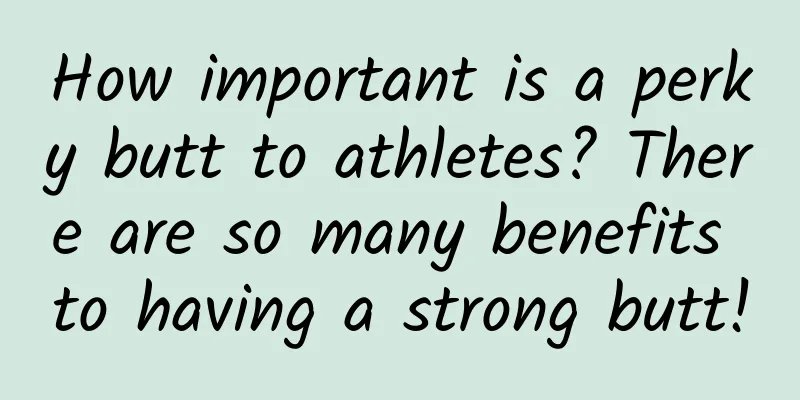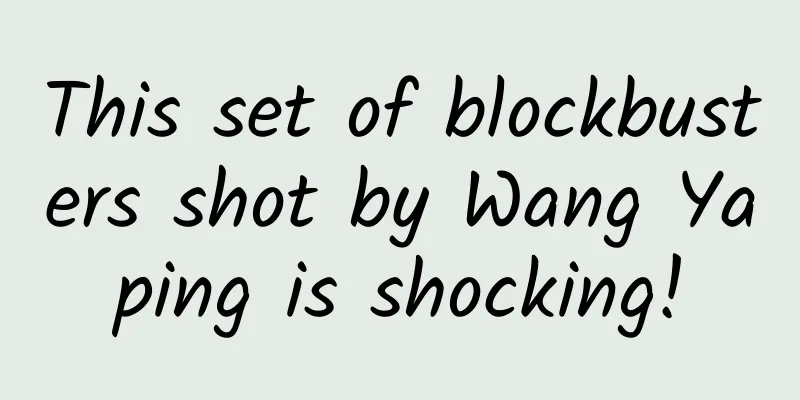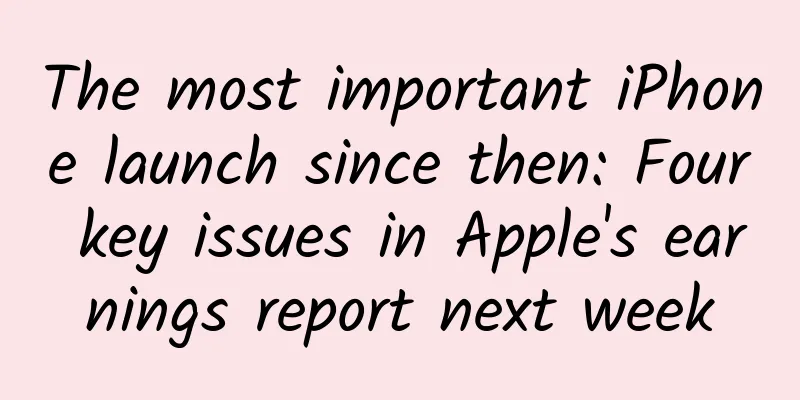How important is a perky butt to athletes? There are so many benefits to having a strong butt!

|
Ask a Question! What impressed you most about the Paris Olympics? Image source: Weibo screenshot Every day when I open my eyes, I watch the game Table tennis, diving, badminton, rock climbing... Heart rate goes up and down with the score certainly Some people focus on the game, while others focus on the fun. for example…… German surfer riding the waves The light of righteousness shines on that big ass! (No) Image source: Weibo screenshot When everyone is paying attention to "White Butt" As a serious popular science account, we focus on A plump and perky butt is so important to health! What you think of the butt: It has a very low sense of existence and is only responsible for sitting and lying in various postures, pooping, and getting hemorrhoids. In fact, our buttocks can be said to be a "super engine". We rely on it to power our daily walking, standing, jumping, playing ball, etc. Image source: Photo Network The main muscles in the buttocks include the gluteus maximus, gluteus medius, and gluteus minimus. Gluteus maximus: Located on the outermost layer of the buttocks, it is one of the largest muscles in the human body and is responsible for stabilizing the pelvis and lower limbs, abducting, extending and externally rotating the hip joint. Gluteus medius: Located below the gluteus maximus, it is mainly responsible for stabilizing the pelvis and participating in hip abduction, internal rotation, and external rotation. Gluteus minimus: Located deep in the gluteus medius, it is mainly involved in stabilizing the pelvis and mobilizing the hip joint. If the gluteal muscles are weak, the buttocks will be dry and sagging. If the gluteal muscles are well developed, the buttocks will be firm and full. Having a strong butt is not only good-looking, but also has many benefits for the body. 1 Provide strength Well-developed gluteal muscles are the guarantee of athletic performance. They can provide the necessary strength support, especially in movements that require explosive power, such as jumping, sprinting, and lifting heavy objects, helping you run faster and jump higher . In daily life, if the gluteal muscles are too "weak", you will feel like you have no strength to climb stairs. 2 More stable and flexible movement The gluteal muscles help stabilize the pelvis and spine, especially during weight training or high-impact exercise. If the gluteal muscles are weak, it may affect the body's stability and increase the risk of low back injury . Image source: Photo Network In addition, the gluteal muscles work in conjunction with other lower extremity muscles to improve movement coordination , which is especially important in sports that require quick changes of direction, such as football and badminton. Image source: Photo Network 3 Improve body posture The muscles of the body need to balance each other to maintain normal function. Strong gluteal muscles help us maintain a good standing, walking and sitting posture, and improve body coordination and balance. Many people suffer from low back pain due to "weak" gluteal muscles . On the one hand, weak gluteal muscles may lead to poor posture , such as anterior or posterior pelvic tilt, which may cause or aggravate low back pain. On the other hand, when the gluteal muscles are not strong enough, it may lead to compensatory use of the waist muscles , causing low back pain. Image source: Photo Network 4 Helps with weight management The metabolic rate of muscle tissue in a resting state is higher than that of fat tissue, so having a well-developed "buttocks" can help increase the overall basal metabolic rate , which is also helpful for weight management and weight loss. Nowadays, people sit all day long when working or studying. Long-term sitting, incorrect sitting posture and lack of exercise may lead to imbalance of gluteal muscles and other muscle groups, gradual atrophy and loss of strength of gluteal muscles. Plus, as we age, our muscle mass and strength naturally decline. So don't let your butt slack off, it's time to train your butt! Do the following exercises quickly to help your butt regain its sense of strength. 1. Squat Image source: Photo Network Stand with your feet shoulder-width apart and toes pointed slightly outward. Slowly squat down, moving your hips back and down, imagining you are sitting in a chair. Keep your knees in line with your toes and your back straight. Use your heels and hips to stand up and return to the starting position. 2. Hip Bridge Image source: Photo Network Lie on your back with your knees bent and your feet flat on the ground, hip-width apart. Push your hips up to form a straight line from your shoulders to your knees. Slowly lower your hips back to the ground. 3. Standing side leg lift Image source: soogif Stand with your feet together or shoulder-width apart. Lift one leg out to the side. Slowly lower your legs back to the starting position. 4. Prone back kick Image source: Photo Network Lie on your stomach with your hands under your shoulders and your knees on the ground for support. Lift one leg up and back, engaging your hips. Slowly lower your legs back to the starting position. 5. Step exercises Image source: Photo Network Find a sturdy step and stand facing it with your feet shoulder-width apart. Place one foot on the step and keep the other foot on the ground. Keeping your back straight and your knees and toes pointed, use your heels and hips on the step to push yourself up and step your other foot onto the step. Step your legs back to the ground one by one in sequence. Statement: This article is a medical-related educational popular science article. It does not involve specific treatment methods or medical behaviors and cannot replace hospital visits. Experts who reviewed this article References [1] Gibbons, John. A guide to the assessment and correction of gluteal muscle dysfunction[M]. Posts and Telecommunications Press, 2019. [2]Distefano LJ, Blackburn JT, Marshall SW, Padua DA. Gluteal muscle activation during common therapeutic exercises. J Orthop Sports Phys Ther. 2009 Jul;39(7):532-40. doi: 10.2519/jospt.2009.2796. PMID: 19574661. [3] Lei Zhou. Experimental study on the effect of hip activation exercises on the blocking and jumping ability of volleyball students[D]. Beijing Sports University[2024-08-08]. Content Production Edit: 100% sweet Map: Eastern Zhou Dynasty |
<<: Michelangelo's paintings actually contain the secrets of AI painting? !
Recommend
up to date! Data rankings of 60 information flow advertising platforms!
Today I bring you the latest traffic rankings of ...
The romance of solar terms can be felt when you go out
On the evening of the 4th, the Beijing Winter Oly...
Explore the Xbox-related features on Win 10
As the previous generation of Windows operating s...
What are the things to pay attention to when developing a mini program?
Mini programs are definitely the most popular pro...
The cute incarnations of ice and snow: How Bing Dwen Dwen and Shuey Rhon Rhon were born
Like the competition venues, mascots are also imp...
Virtual Reality in the Eyes of Analysts: Opportunity or Concept?
In the classic blockbuster "The Matrix"...
The "Corpse Hidden in Inn Case" shocked the entire Internet! After the murder, how did the criminal investigation personnel fight wits and courage with the murderer?
In the past two days, it was revealed online that...
Inventory of four new AI fraud methods, experts: Use the simplest method to prevent being deceived
Copyrighted images from the gallery, unauthorized...
Reliable recommendations for drinking and tasting tea in Changsha: Sharing the most cost-effective places in Changsha! Studio Arrangement
Reliable recommendation for drinking tea in Chang...
How do Tik Tok influencers promote themselves? Everything you want is here!
More and more people come to me for consultation ...
This is the only thing that makes you happier than receiving a year-end bonus.
Every time when New Year's Day or Spring Fest...
Android 12 now has a device search API for third-party launchers
A month after Google released the second develope...
Why do you need to extract wisdom teeth even if they don't hurt? The most comprehensive guide on tooth extraction precautions and costs. I recommend saving this guide!
Recently, a topic "A woman's wisdom teet...
It changed color and also changed gender...
Welcome to Northern Plants. Today I will introduc...
Chest pain "just go away"? Or it could be a sign of sudden death! Be highly alert to these 3 chest pain signals...
Expert of this article: Zhao Jing, attending phys...


![Efficient employment class for emotional counselors, achieving a side job with a monthly income of 50,000+ [audio course]](/upload/images/67cc339626c72.webp)






